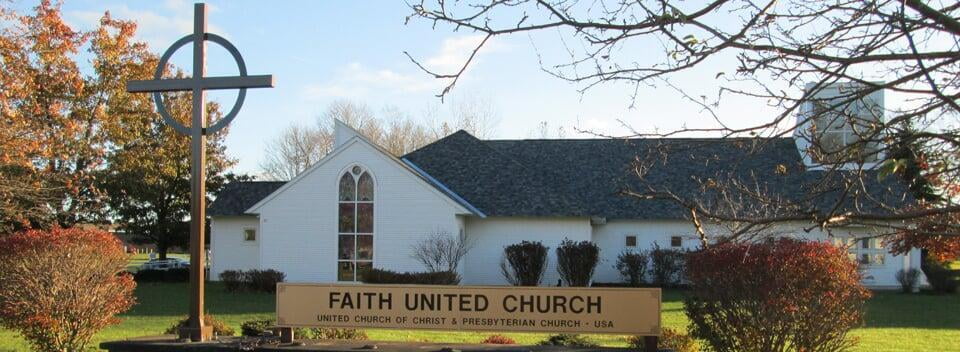
Growing and Supporting Each Other in Faith
Growing in one's Christian faith should be regarded more as a life-long journey rather than a guilt trip. The members of Faith United Church strive to support each other as we embark on this journey and grow into God's community. We learn to let our faith in God guide us in our relations with all we encounter in the world around us. Through our use of the prayer chain, deacons care groups, fellowship events, and community outreach, we try as best we can to live by those ideals Christ modeled for us.
The growth of person's faith has both a community or group component and an individual component. Here at Faith United, we have several groups that are open to any and all interested people such as choir, adult study, and faith circle.
There are also a number of faith-building activities that we would like to offer for people to engage in outside of the church building, perhaps in your own home. During this time of the COVID-19 pandemic, many of us have had to limit most of our activities to those we can do at home. To learn more about faith-building activities you can do at home, scroll down to the section just below this one.
How Can I Contribute?
There are two ways you can contribute to Faith United Church:
You may volunteer your time and talents to one or more of the many church programs or mission initiatives. We do not want to pressure you. It's perfectly fine if you'd like to just come and observe.
You may also make a monetary contribution.
Faith Building Activities for home




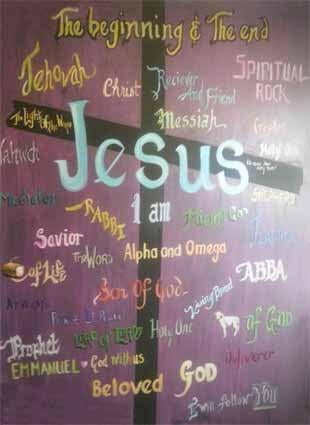
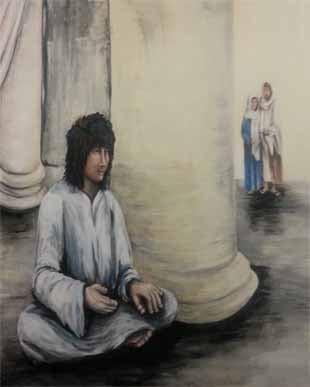
Mural paintings from the walls of the Christian Education wing of Faith United Church.
Faith Building for Families
Faith Building for Individuals
| The Blessings Box |  |
A small box or jar with a lid is needed as well as a supply of slips of paper with a nearby pencil or pen. Throughout the year, whenever something happens that you are thankful for, write it down on a slip of paper, fold it up, and place it in the Blessings Box. Each family member is encouraged to do this. Using a transparent jar or box is an excellent way to see how the blessings accumulate over time, but since the papers are folded, there is still a mystery surrounding them. Then, once a year on a special occasion, (Thanksgiving Day would be an obvious choice) the box is ceremoniously opened, the notes are unfolded and read aloud. With so much negativity in the world, this is an excellent way to celebrate all we are thankful for but all too soon would forget. It's not just about what we receive but also what we give. Children (and adults) are often surprised to discover how little things they have done make a very big difference for others.
| Learning More About the Bible |  |
Do you feel overwhelmed by the Bible? Not sure where to begin? Here are some resources you can look into in the privacy of your own home. All of these resources are in PDF format that you may view in your browser and/or download to your computer if you so choose.
The Christian History Institute describes "Discovering the Bible" as a simple introduction to the Bible, what it is, how we got it, and how to use it.
The UCC's booklet "The Bible and the United Church of Christ" is a collection of short articles such as "How We Read the Bible" and "Bible FAQs".
David Robert Ord's article called "The Bible-the Living Word" emphasizes tolerance and room for divergent viewpoints.
| The Family Newsletter |  |
We are used to finding family newsletter updates enclosed within our Christmas cards. These little newsletters are often generated by the parents, but why shouldn't the children be involved? Encourage your child to create their own version of the family newsletter and let them be as creative as they want. The newsletter does not have to be sent out at Christmas time. In almost every family there are grandparents, aunts, or uncles that are not connected to the Internet and would appreciate a good, old-fashioned hand-written and illustrated update on all the family's activities. An especially good time for children to do this is during their summer vacation from school, and grandparents appreciate the contact no matter what time of year it may be.
Daily Devotionals
A daily message to guide you through a few moments for quiet reflection, meditation, and prayer.
d365.org is a devotional for the young and the young at heart.
The Still Speaking Daily Devotional comes from the United Church of Christ's Still Speaking writer's group.
Daily lectionary readings are available from the Presbyterian Church's devotions webpage.
The above are available free of charge.
Also available for a yearly subscription charge of $8.95 is the devotional booklet called These Days from the Presbyterian Publishing Corporation. If interested in subscribing please email: customer_service@wjkbooks.com
| Prayer |  |
A traditional, time tested method of building a strong Christian faith within families is the bedtime prayer. A close corollary is the "grace" or thanksgiving prayer said (or often sung) before meals. Get the children involved with this. Encourage your children to give thanks for all the people who love and support them, and especially for God's love.
Guide and encourage the children to use their own words as much as possible in accordance with their age and confidence level. With our examples and encouragement, children will come to know that prayer is not just about asking God for favors but rather for expressing our thankfulness for what God has already done and continues to do for us and others.
| Random Acts of Kindness |  |
Encourage children to do something nice for another person, for no particular reason. Just because…… If someone does something nice for you, you can certainly repay the favor, OR you can choose to "pay it forward" by doing something nice for someone else, even a person you may not know very well. It has been suggested that a child could place two or three pebbles in their pocket (say, the left one). Each time they perform a random act of kindness, they transfer one pebble from the left pocket to the right. It's a tangible way of keeping track of our acts. At the end of the day, you remove the pebbles from your pocket and as you hold each one in your hand you are reminded of that particular person and what you did for him or her.
| Gifts to Charity |  |
Each year, near Christmas, there are toy drives for less fortunate children. Involve your child by asking for their help in picking out a toy to donate. Children are, after all, experts when it comes to the appreciation of toys and their help is invaluable. Extend this idea to the local food pantry by having your child accompany you to the supermarket and choose items for donation. Or, better yet, have them select something from the shelves in your own home to be donated. Emphasize that we are blessed with much and can certainly spare some things that can be given to people who are less fortunate. You can also set up a container such as a mason jar for the collection of spare change at home. After a fair amount has been collected, have the child place it in the offering plate at church or in the Salvation Army kettle near Christmas time.
Oftentimes, grocery stores run "two for the price of one" or "buy one, get one free" promotions. When you and your child are at the store and see one of these promotions, buy one item for your own family's use and donate the other to your local food bank, or better yet, donate them both!
| Other Resources |  |
Here are other websites that have useful resources for faith formation activities and practices you can do at home with your family.
The Building Faith-Home Practices page from Virginia Theological Seminary.
The Faith at Home webpage from the Episcopal church's "Lesson plans that work" site.
Resources for Faith Formation at Home from the Southern New England Conference of the United Church of Christ.
The Presbyterian Church USA has made available a number of free educational resources during this time of the COVID-19 pandemic.
| The Labyrinth |
The labyrinth is a symbol of one's faith journey through life. At first it may look like a maze, but a maze it is not. A maze typically has an entrance and a separate exit. A labyrinth has only one opening that is both an entrance and exit. Some labyrinths are life-sized, being laid out so you can walk them all the way to the center and then, retracing your steps come back out into the world. Others exist only on paper to be traveled physically be eye, pencil, or finger. The point is this: At the same time you physically move through the labyrinth, you occasionally stop to meditate, pray, and self-assess your relationship with God and with others. As you journey inward on the labyrinth, you are gradually withdrawing from the distractions and obligations of the world around you. When you arrive at the center all that is important is what's between you and God. As you re-emerge into the world, hopefully with a fresh perspective, you allow God to guide you, again through prayer as you re-integrate into the world and assume your responsibilities and obligations. One of the world's most famous labyrinths is found at Chartres Cathedral in France. A great resource is Rev. Dr. Lauren Artress's book Walking a Sacred Path: Rediscovering the labyrinth as a Spiritual Practice.
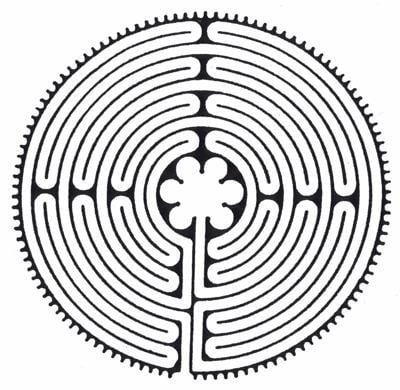
Searching the Bible
Finding information in the Bible can be difficult, especially if you are unfamiliar with it. To help you with this, we've included the following search widget from bibles.org. Type in a word or expression you are looking for such as "ten commandments" and click the search icon.
| Lectio Divina (Sacred Reading) | 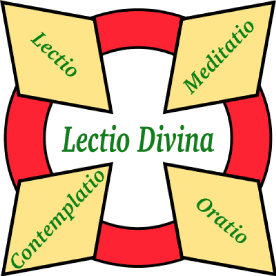 |
Lectio Divina is an ancient practice in which one listens as a Bible passage is read slowly and repeatedly, with a time of silence in between each of the multiple readings in which the listener can meditate, pray, contemplate, or listen for the call of God. It is quite the opposite of a practice in which one would fiercely concentrate on the passage, but rather one in which the listener is encouraged to empty their mind and experience the message. Some Bible passages lend themselves quite well to this particular practice such as Psalm 23, but it can be used with most any. The practice of Lectio Divina works best if you have a second person who can read the passage aloud while the other listens. It can also be done with the help of an audio book version of the Bible. Or an individual can make their own sound recording of it and then play it back at a later time for listening. One could also read the passage silently and then pause for reflection, before re-reading it, but some say this is not quite as effective as hearing it read by another. In any event, there is no single, correct way to do Lectio Divina. To learn more about Lectio Divina, check out this resource.
